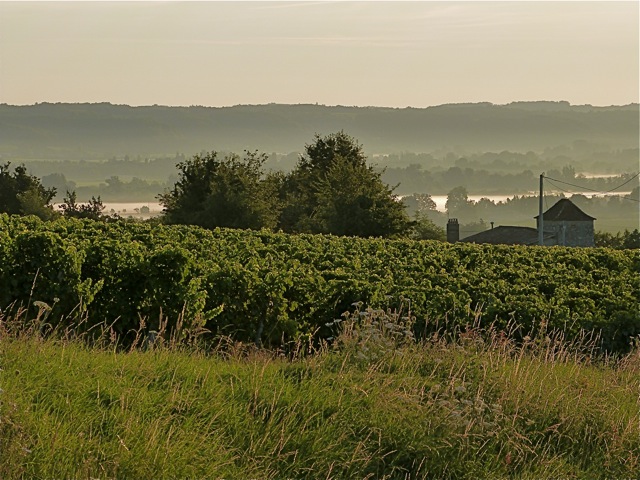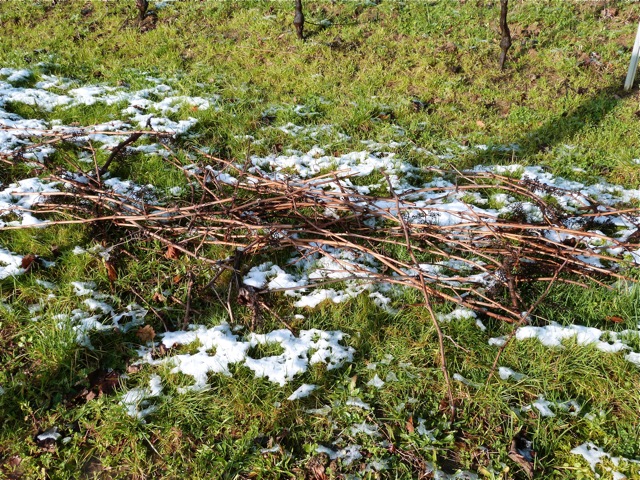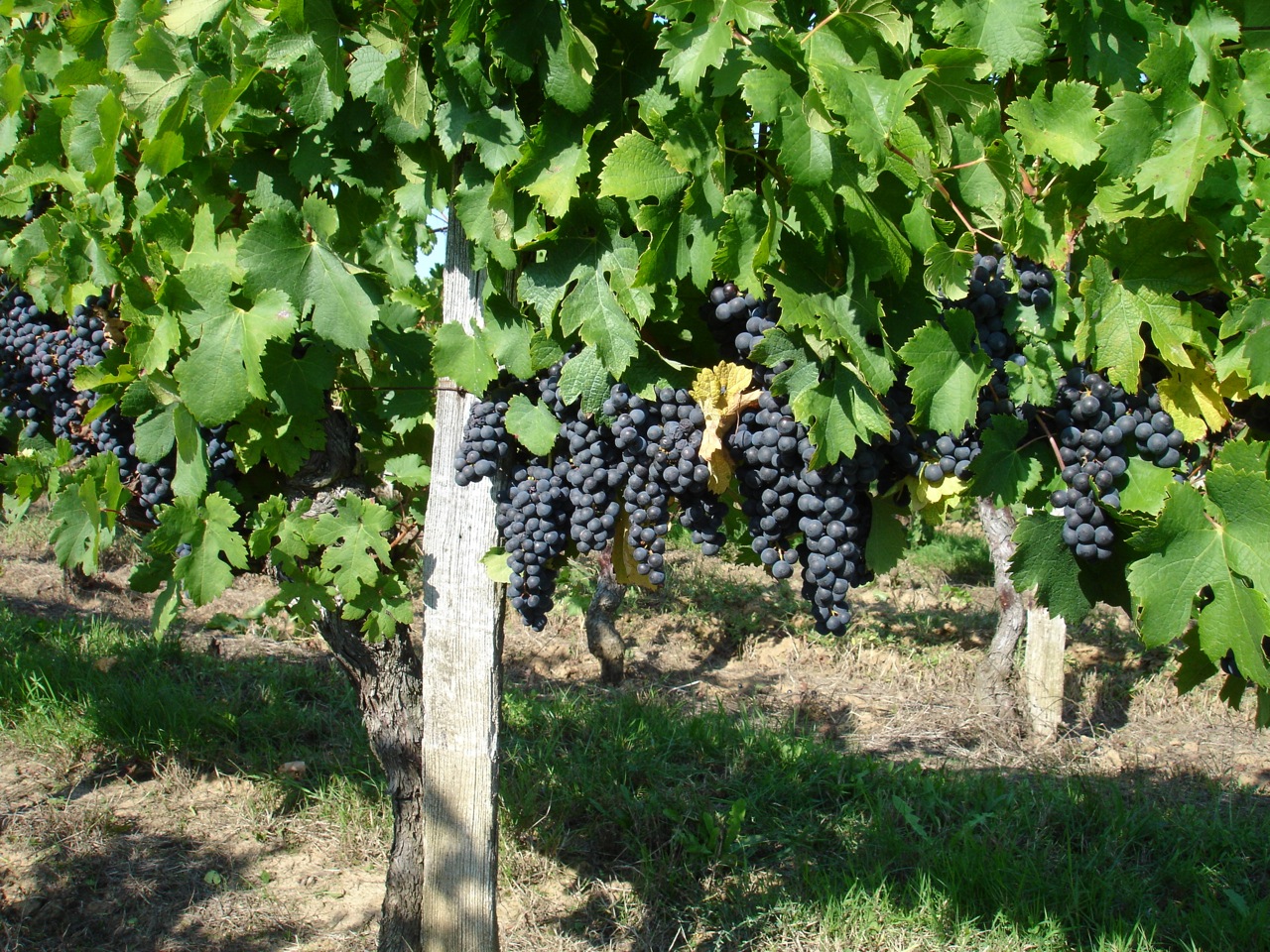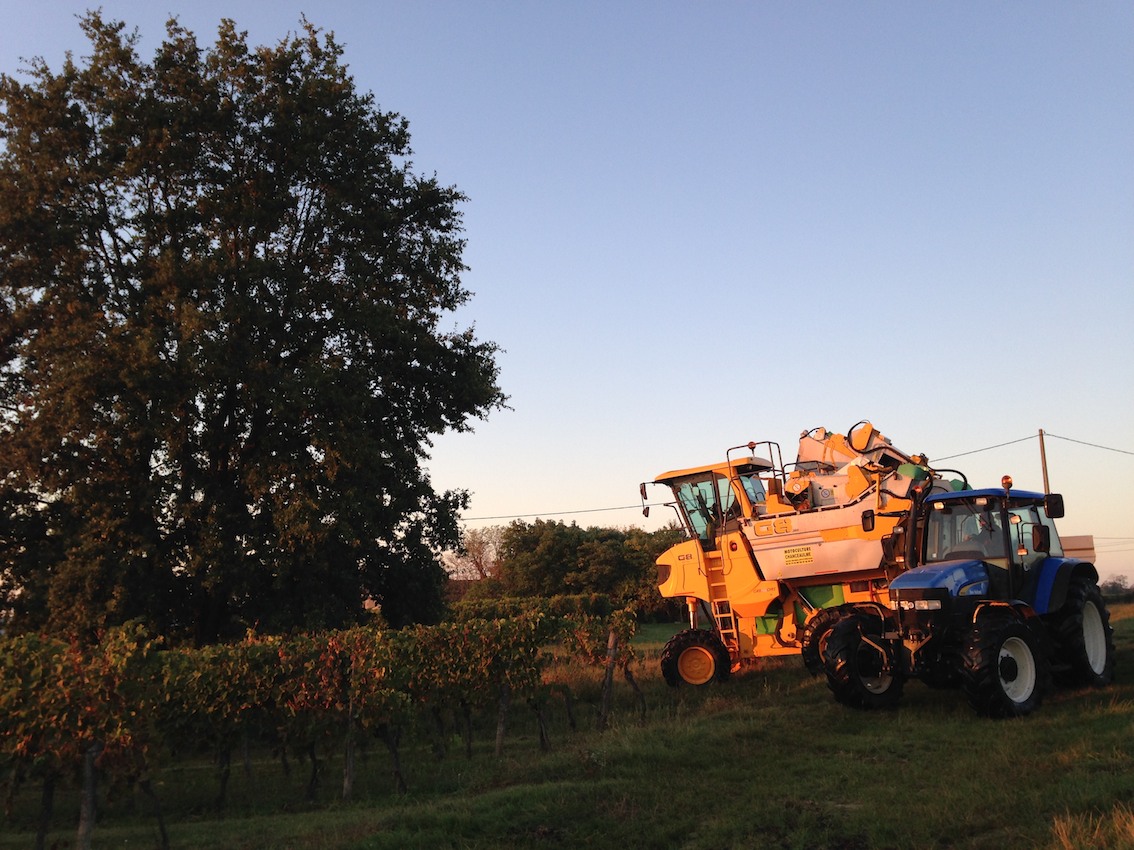When we poured that bright pink juice from the spigot on Harvest Day a year and 11 days ago, next year seemed a wonderfully long time away. There was everything ahead of us to experience for the first time.
End of a long summer, we were just letting down our guard, the “garnet girls” nicely tucked in for their beauty sleep so they may refine their aromas for sale this winter.
And suddenly we’re pregnant again.
Sunrise after a cool night, vapors rising from the river. It’s a few weeks before harvest and we’re up on the hilltop again, walking the vineyard to select the choicest parcels for 2012.
The farmer is his usual pessimistic self. I’m getting used to this. He has lived enough risk to fill several lifetimes so he never pronounces for the positive until the harvest is in. This year the grapes are two weeks behind average schedule. You can estimate Harvest Day by noting when the green grapes have all turned purple, and count to 50. Which means we’ll be harvesting the Merlots during the 1st week of October.
The vignerons all over Bordeaux are lamenting a climatological crazy year. Too much rain in the spring, a strange summer – starting cool, ending very hot and dry, inordinate attacks of parasites and disease and consequently a lower yield all around.
But we’re walking at dawn and feeling grateful. Yes, our yield will be lower, but our pursuit is quality, not quantity, so we have some breathing room. Most importantly, we haven’t suffered from hail or a serious attack of disease or parasites as many in the region have. Once again I thank our ancestors for landing on this blessed hilltop, for this blessed terroir, where, knock on wood, the harvests have the habit of making it nicely through even the more difficult years.
Which makes me think about the definition of terroir – there’s much more to it than terrain. I translate loosely from the “Le Gout du Vin” by Emile Peynaud: The word terroir is almost impossible to translate from the French. There are of course the geological factors; the make up of the soil – limestone, clay, sand…; the chemisty – the balance of azote, potassium… but also the slope, the orientation, the depth below the surface that the roots can exploit, the amount of humidity, the circulation of water, the general climate. But we tend to overlook the essential: the intervention of the human being. The person who creates the planting design, who cultivates, improves, tends, cuts, fertilizes, treats; who chooses the best varietal for the soil and the most appropriate root stock. One can say there are as many “terroirs” as there are parcels of vine. And it is very rare indeed to find a “micro vignoble” – a place where the wine is produced from a single micro terroir.”
As we walk this morning I see my work cut out for me. For the next 3 weeks I’ll be patrolling with my “scizzors,” combing row after row for every little bunch of grapes we deem unworthy. Mostly I’m looking for signs of oidium which could leave a bitter taste if affected grapes get into the wine.
It’s a nourishing thought, to tend a terroir. Taking the time to walk and cut and sing to myself and hope the plants enjoy the key of “A”, reputed to promote the harmonious growth of young things.
As I turn over the grapes and begin to snip, I see we’re lucky, with mostly healthy plants. But my wrists get tired, and I remind myself that this is why we call ours a hand-made wine.





